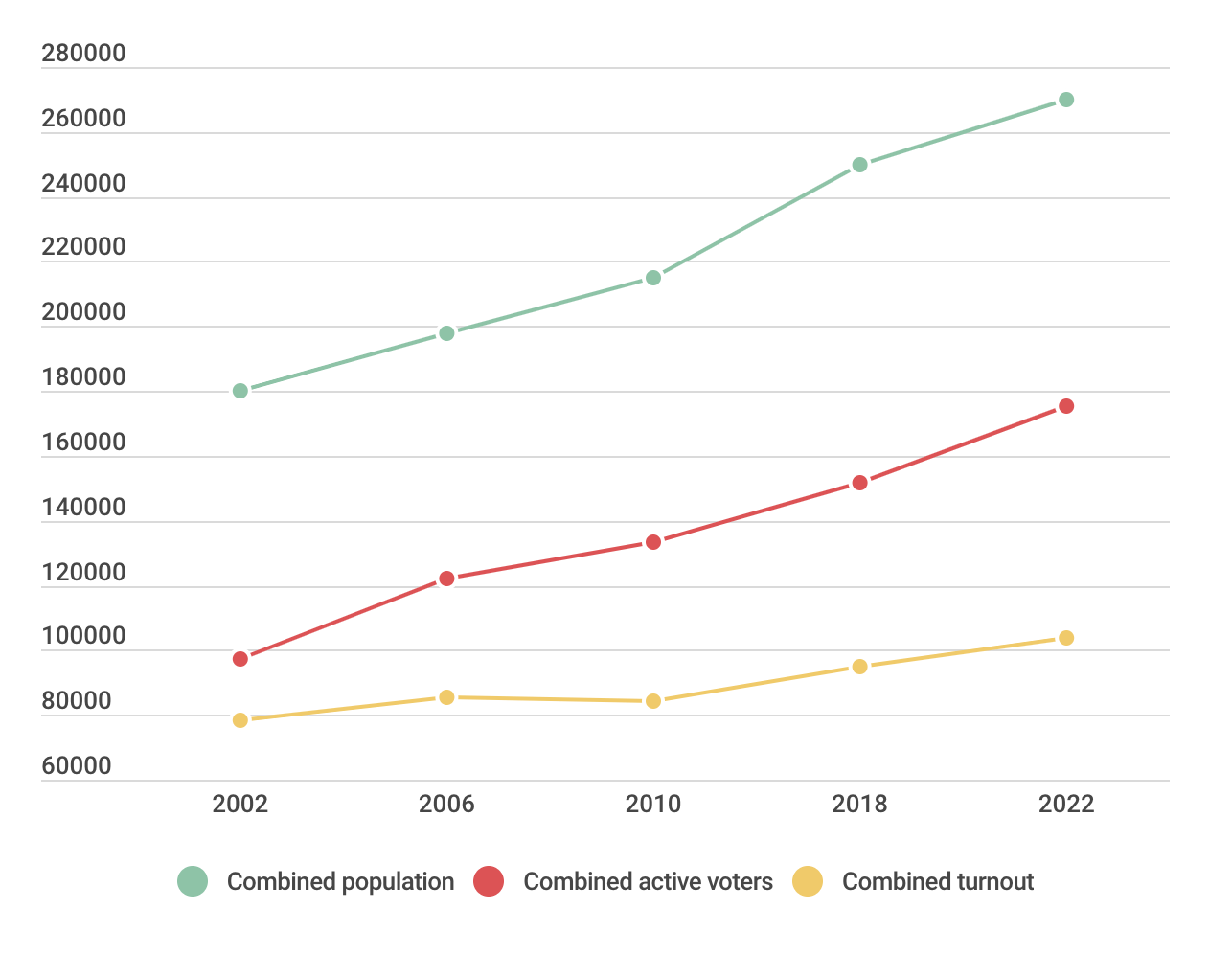Simplified: The number of active registered voters has increased at a faster rate than population growth, but when it comes time to cast a ballot, an increasing percentage of registered voters aren't voting, according to a Sioux Falls Simplified analysis of two decades of turnout data.
Why it matters
- The majority of people who live in the Sioux Falls area aren't voting in midterm elections.
- The combined population of Minnehaha and Lincoln Counties grew by 50% over the last two decades. In the same period, the number of ballots cast in midterm elections grew by 33%.
- It's worth noting that this data is limited to midterm elections – think governor's races, not presidential ones. That said, it still shows a trend that even as the Sioux Falls area grows, a smaller and smaller group of people is choosing the region's elected leaders.
Show me the numbers
Embed not working? See the chart online here.
Ok, now tell me what it means
The thing about numbers is they can tell different stories depending on who the author is.
What the data doesn't show is possible reasons for either higher registered voters or lower voter turnout. That could be anything from people forgetting an election is happening to voter apathy to people feeling burnt out on politics and tuning out.
- You're also seeing the total population, which does include a percentage of people who cannot vote (children, people with a felony on their record, etc.).
- So some of the gap between the red line (active registered voters) and the green line (population) in the chart above cannot ever be fully closed.
- This data also only shows midterm elections. It doesn't show local city elections or presidential elections (which historically have higher turnout).
What the data does show, though, is a trend.
- For whatever reason – likely, a complex variety of factors – the number of ballots cast in local midterm elections is increasing at a much slower rate than both the number of people registered to vote and the number of people coming to Sioux Falls in general.
- Looking at turnout percentages, it also shows Lincoln County voters turnout at a higher rate than Minnehaha County voters and overall voters statewide.
- Minnehaha County voters saw the steepest decline in turnout, dropping below the overall statewide turnout in the last decade.
So, what happens next?
Again, these data are just numbers at a moment in time.
But, if the trend makes you feel some kind of way, there are some actions you can take. These include:
- Registering to vote (and then actually voting),
- Helping friends, family and community members register and get to the polls in the next election.


